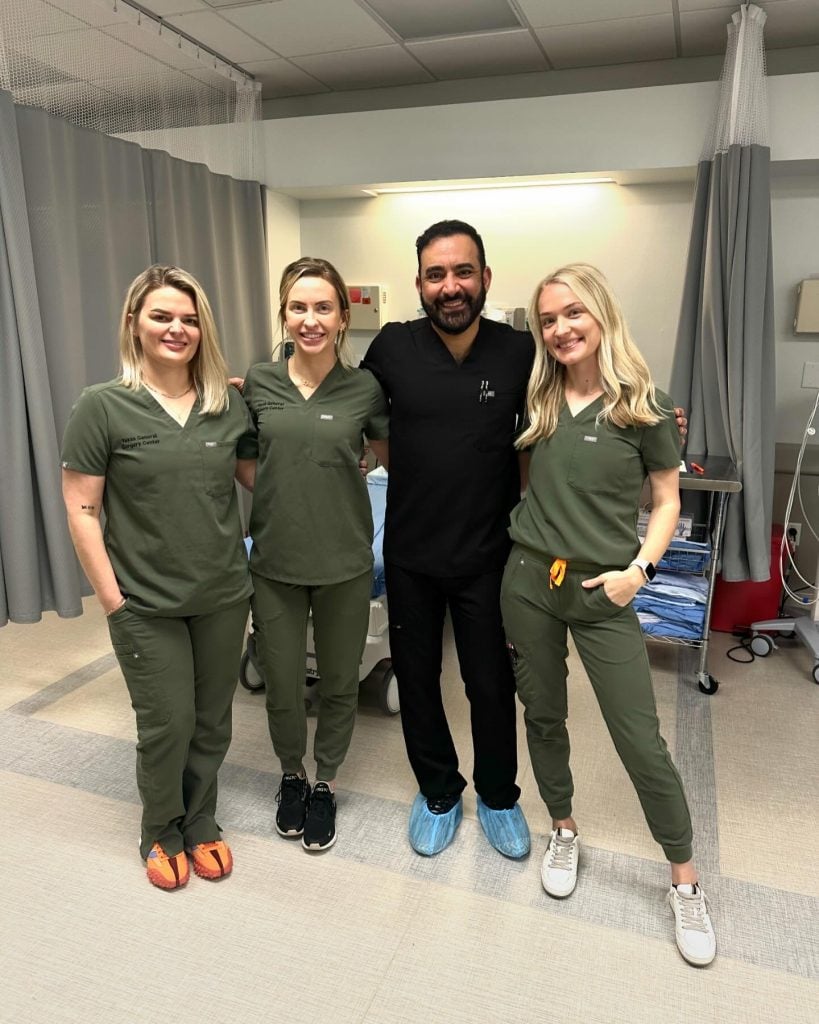As we age, it’s common to experience lower back pain that affects daily comfort and mobility. For many seniors in Fort Worth, Allen, Coppell, and Garland, TX, this pain can come from natural changes in the spine, reduced flexibility, or chronic conditions that develop over time. Understanding what’s behind your discomfort—and how to treat it safely—can help you regain movement and confidence in your everyday life.
Why Does Lower Back Pain Increase with Age?
Dr. Ghalambor, a fellowship-trained interventional pain management specialist, explains, “Aging affects every part of the spine—from bones and discs to joints and muscles. Over time, these structures weaken, leading to stiffness, pain, or nerve compression that can radiate down the legs.”
Here are the most common age-related causes of back pain in older adults:
- Degenerative disc disease: The soft discs that cushion your spine dry out and shrink, leading to pressure and discomfort.
- Spinal arthritis (osteoarthritis): Wear and tear on the joints of the spine can cause inflammation and stiffness.
- Spinal stenosis: Narrowing of the spinal canal puts pressure on nerves, often causing tingling or pain in the lower back or legs.
- Osteoporosis: Weak or brittle bones increase the risk of compression fractures, which can lead to chronic pain.
- Muscle weakness and poor posture: Less activity and muscle loss with age can strain the lower back.
When to See a Specialist
If back pain limits your movement, causes numbness or radiates into your legs, it’s important to consult a spine clinic or pain specialist. Dr. Ghalambor notes, “Persistent lower back pain in seniors should never be ignored. Early evaluation helps rule out serious causes and opens the door to non-surgical, personalized care options.”
Safe and Effective Treatment Options for Seniors
Managing chronic pain in older adults requires gentle, tailored care. Common lower back pain treatments for seniors include:
- Senior physiotherapy: Light exercises designed to strengthen the core and improve flexibility.
- Interventional pain management: Image-guided injections or nerve blocks that reduce inflammation and pain without surgery.
- Osteoporosis back pain relief programs: Treatment plans that focus on improving bone density and posture.
- Medication management: Using anti-inflammatory or pain-relief medication under medical supervision.
- Non-surgical spine therapy: Targeted treatments like radiofrequency ablation or spinal decompression to ease nerve pressure.
- Lifestyle changes: Weight control, gentle yoga, walking, and proper posture can support long-term spine health.
At-Home Care Tips for Managing Back Pain
You can ease lower back pain naturally by:
- Maintaining an active routine with stretching and low-impact exercises.
- Using lumbar support while sitting.
- Applying heat to relax muscles or cold packs to reduce swelling.
- Sleeping on a firm mattress that supports spinal alignment.
- Avoiding long periods of sitting or standing in one position.
What Makes Specialized Care Important
Dr. Ghalambor emphasizes that every patient’s pain is unique. “There’s no one-size-fits-all solution. For older adults, the goal is to restore function, reduce pain safely, and improve quality of life without relying on unnecessary surgery.”
Find Relief with Expert Senior Back Pain Treatment
If you or a loved one in Fort Worth, Allen, Coppell, or Garland is living with persistent lower back pain, help is available. A comprehensive evaluation can identify the source of discomfort and match you with the right non-surgical treatment. Reach out to NorTex Spine & Joint Institute today to start your path toward comfort and mobility.
Transparency Statement:
While NorTex Spine & Joint provides specialized care, many reputable clinics offer similar treatments. Always seek multiple opinions before deciding on treatment.
Additional Resources:
https://www.mayoclinichealthsystem.org/hometown-health/speaking-of-health/7-common-low-back-pain-faq
https://www.webmd.com/back-pain/what-helps-with-lower-back-pain







